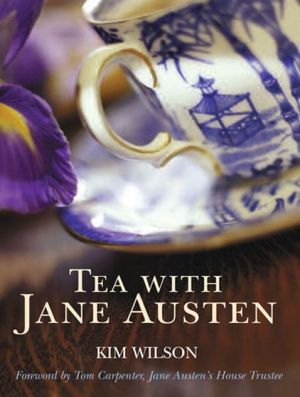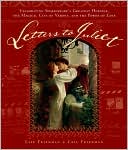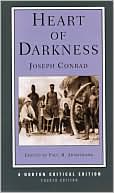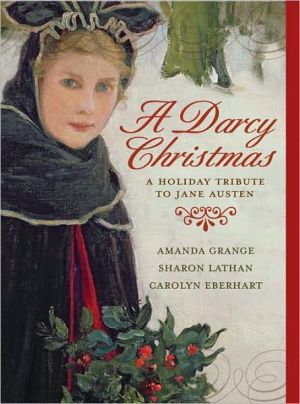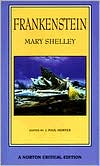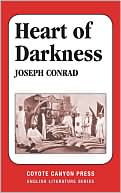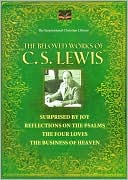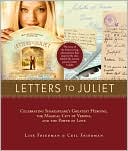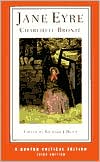Tea with Jane Austen
Who would not want to sit down with Jane Austen and join her in a cup of tea? Here for the first time is a book that shares the secrets of one of her favorite rituals.\ Tea figures prominently in Jane Austen's life and work. At the center of almost every social situation in her novels one finds tea. In Emma, does Miss Bates drink coffee? Of course not: 'No coffee, I thank you, for me-never take coffee.-A little tea if you please.' In Pride and Prejudice, what is one of the supreme honors Mr....
Search in google:
Who would not want to sit down with Jane Austen and join her in a cup of tea? Here for the first time is a book that shares the secrets of one of her favorite rituals. Tea figures prominently in Jane Austen's life and work. At the center of almost every social situation in her novels one finds tea. In Emma, does Miss Bates drink coffee? Of course not: 'No coffee, I thank you, for me-never take coffee.-A little tea if you please.' In Pride and Prejudice, what is one of the supreme honors Mr. Collins can envision Lady Catherine bestowing on Elizabeth Bennet and her friends? Why, drinking tea with her, naturally. Tea with Jane Austen begins with tea drinking in the morning and ends with tea in the evening, at balls and other gatherings. Each chapter includes a description of how tea was taken at a particular place or time of day, along with history, recipes, excerpts from Austen's novels and letters and illustrations from the time.AustenblogA true Janeite enjoyment of the ridiculous.
CHAPTER ONE\ "Happy, happy breakfast!"\ TEA IN THE MORNING\ \ Happy, happy breakfast! for Henry had been there, \ Henry had sat by her and helped her.\ - Northanger Abbey\ \ \ Breakfast with the Austens\ \ At 9 o'clock she made breakfast-that was \ her part of the household work-The tea and sugar stores were under \ her charge.\ \ \ \ - My Aunt \ Jane Austen, by Caroline Austen\ \ Jane Austen was in charge of making her family's \ breakfast every morning, including that most important part of breakfast: the \ tea. Producing a really good, hot, steaming pot of fragrant tea requires just \ the right touch, and Jane, a tea lover, was no doubt pleased to make the \ family's tea exactly as she liked it. She would have made it much the way we \ make good tea today, with freshly boiling water poured bubbling over \ high-quality, loose tea in a nice, fat, warmed teapot. Jane probably would have \ boiled the water in the Austens' large, copper tea kettle right in the dining \ room, on the black hob grate set into the \ fireplace. She may have used a \ teapot from a special breakfast set (a friend gave Jane's mother a Wedgwood \ breakfast set in 1811). China breakfast sets usually included a teapot, cups and \ saucers, a creamer, a sugar basin, and sometimes a matching tray. Such sets were \ fragile as well as valuable. Jane's nephew wrote in his memoir of her, "Some \ ladies liked to wash with their own hands their choice china after breakfast or \ tea," and Jane may well have preferred to wash the china herself rather than \ entrust it to the maid.\ \ The tea itself (at that time extremely expensive and therefore prone to \ pilfering by servants), was kept locked away in a dining room cupboard, to which \ Jane alone had the keys. The Austens may have kept their tea in a china tea \ canister, or, more probably, in a locked tea caddy, which seems to have been the \ most common kind of tea container. Tea caddies were often made of fine inlaid \ woods or decorated in some other attractive fashion. A popular craft for young \ ladies was to decorate a tea caddy with filigree work: rolled strips of paper \ applied in a fanciful pattern. In Sense and Sensibility, Lucy Steele, sly \ flatterer that she is, makes a filigree basket for Lady Middleton's spoiled \ daughter and no doubt would have eagerly decorated a tea caddy for Lady \ Middleton had she been asked.\ \ Caddies were generally divided into two sections to hold two different \ sorts of tea (usually green and black), and often included a crystal bowl for \ blending the tea. A small brass or silver scoop, called a tea ladle, was used to \ measure out the tea leaves. In 1808 Jane Austen recorded her mother's purchase \ of a "silver Tea-Ladle" and "six whole Teaspoons, which makes our sideboard \ border on the Magnificent." Jane most \ likely took sugar in her tea-most English people did in her time-but I don't \ think she took milk or cream. Writing to her sister, Cassandra, about a young \ lady of their acquaintance, she said, "There are two Traits in her Character \ which are pleasing; namely, she admires [the novel] Camilla, & drinks no \ cream in her Tea." The Austens kept their sugar \ locked up because it, too, was expensive. It was sold in many grades, from the \ highly refined, pure white sugar that only the well-off could afford, down to \ the darkest of brown sugars used by the poor. Granulated sugar had been only \ recently invented and was not yet widely available. Sugar was molded into large, \ cone-shaped loaves weighing several pounds each that had to be broken up or \ grated before the sugar could be used. Sugar cubes would not be invented until \ 1843-if people wanted sugar for tea, they had to first break it into irregular \ lumps with special tools called "sugar nippers," from which practice comes the \ traditional question "One lump or two?"{{begin pull-out quote}}The \ breakfasts are generally very frugal, consisting commonly of tea, and muffins or \ hot rolls, with good butter. Coffee is less frequently used; and it is seldom \ good. I could rarely get it strong or clear, and in this only does there seem to \ be any proof that the English do not understand cooking.\ \ \ - Letters \ from England, by Joshua White, 1810\ \ \ The breakfast Jane made for her family was a light, elegant meal \ consisting of toast, or perhaps muffins or rolls, in addition to the tea. The \ Austens had a cook, who would have done the actual baking. She probably sliced \ the bread in the kitchen and brought it to the table in a toast rack, ready for \ Jane to toast. To make the toast, Jane would have used a long-handled toasting \ fork or a hearth toaster (a metal rack designed to hold the bread in place) to \ toast the bread over the open fire-a tricky business. In Jane Austen's \ unfinished novel Sanditon, fussy Arthur Parker shows Charlotte Heywood \ his mastery of the skill: "I hope you will eat some of this Toast," said he. "I \ reckon myself a very good Toaster; I never burn my Toasts-I never put them too \ near the Fire at first-& yet, you see, there is not a Corner but what is \ well browned." With \ the toast went good country butter, and sometimes raspberry jam made in the \ Austen household or honey from Cassandra's beehives. Jane and Cassandra's \ mother, who suffered from digestive disorders and "bilious complaints," \ preferred to eat dry toast for breakfast, but hypochondriac Arthur Parker has \ the opposite fear-that dry toast will "hurt the coats of the stomach." Arthur, a \ stout young man, amuses Charlotte when he assures her that the best way to \ protect his stomach from toast that "irritates and acts like a nutmeg grater" is \ to eat as much butter as possible on his toast, much to his sisters' \ disapproval: "Charlotte c[oul]d hardly contain herself as she saw him watching \ his sisters while he scrupulously scraped off almost as much butter as he put \ on, & then seizing an odd moment for adding a great dab just before it went \ into his Mouth."\ When the Austens lived in the country, at Steventon and \ later at Chawton, good butter would have been readily available, but when they \ lived in the cities of Bath and Southampton, quality milk and butter would have \ been harder to procure. Fresh dairy products were difficult to import from the \ countryside, especially in warm weather. To help solve this problem, cows were \ often kept in cities to provide for the city dwellers. Yet the diet of city cows \ was so poor that they generally produced unappetizing, watery milk and inferior \ butter. In Mansfield Park, Fanny Price, banished to the city of \ Portsmouth, must drink her tea with unappealing milk that is "a mixture of motes \ floating in thin blue." Jane once wrote to Cassandra complaining about Bath \ butter: "My breakfast supplied only two ideas, that the rolls were good, & \ the butter bad."\ Breakfast with Mr. Darcy\ \ "Miss Fanny Brooke and myself made tea and coffee; her \ ladyship presiding at the chocolate tray. A more elegant private breakfast was \ never given to any company. The urns, trays, waiters, and canisters were all of \ silver, engraved with Sir Charles's arms; the china was beautiful; in short, the \ whole equipage was handsome beyond any one I ever saw."-Charlotte Lawson \ in Vicissitudes in Genteel Life (Anonymous), 1794{{end pull-out \ quote}}Though breakfast in British households might mean variations on the \ theme of tea and toast, the meal could sometimes be a luxurious affair. At the \ grander houses, such as Mr. Darcy's Pemberley in Pride & Prejudice, \ boiling water for tea in a simple copper kettle on the hearth would have been \ unthinkable. Instead, large, often lavishly decorated silver tea urns were used. \ Tea urns, despite their name, held not tea but boiling water. The water was \ usually kept boiling by means of an insert that contained a red-hot iron bar \ that had been heated in the kitchen fire. A servant would carry in the steaming \ tea urn and place it at the end of the table next to the lady of the house, who \ would make the tea herself in a fine china or silver \ teapot. Special china sets made \ just for breakfast, such as the Austens had, were very popular. Fanny Dashwood \ complains bitterly in Sense and Sensibility that the breakfast china her \ mother-in-law takes with her when she moves is "twice as handsome as what \ belongs to this house." In Northanger Abbey, Catherine Morland is \ impressed by the Abbey's lavish breakfast and "the elegance of the breakfast \ set." The beverages served in such handsome breakfast \ china invariably included tea (as at the Austen house), but some people, such as \ Jane's rich brother, Edward, preferred coffee, and others, such as Northanger \ Abbey's General Tilney, drank hot chocolate (called simply "chocolate" at \ that time). Coffee and chocolate had both been introduced in Great Britain at \ roughly the same time as tea, but they never became as popular. \ Breakfast was not a formal meal. People chatted, or read letters or \ newspapers. When Catherine Morland receives a disturbing letter at the abbey \ during breakfast, she is grateful that the intimidating General Tilney, "between \ his cocoa and his newspaper, had luckily no leisure for noticing \ her." Even in great \ houses, the food served at breakfast was chiefly some variation of bread and \ butter. Cakes, bread, muffins, toast, and rolls are all mentioned in \ descriptions of breakfasts of Jane Austen's time. However, more substantial fare \ was sometimes offered. In Mansfield Park, Fanny Price, after bidding \ goodbye to her brother and Henry Crawford, returns to the breakfast parlor to \ "cold pork bones and mustard in William's plate" and "broken egg-shells in Mr. \ Crawford's." Clearly, Henry Crawford had been eating boiled eggs, and William \ probably had enjoyed some sort of pork chop with his mustard. Cautious Mr. \ Woodhouse in Emma would have approved of the latter as long as it was \ "nicely fried, as ours are fried, without the smallest grease, and not roast[ed] \ . . . for no stomach can bear roast pork."\ Tea and Toast, or Strong Beer and \ Sturgeon?\ \ 'Twas better for each British virginWhen on roast \ beef, strong beer and sturgeon,\ Joyous to breakfast they sat round,Nor were ashamed \ to eat a pound.- "The Tea-Pot and Scrubbing-Brush,"\ an 18th-century poem by Christopher Smart\ \ The typical "tea and toast" breakfast that Jane Austen \ enjoyed was a relatively new invention. Traditionally, British breakfasts had \ consisted of hearty fare that often included beef and ale. By the end of the \ eighteenth century, however, many people, especially those of the upper classes, \ considered such breakfasts to be antiquated and rustic. In the early 1700s, \ Queen Anne first set the mode of drinking tea for her morning meal, preferring \ the light, refreshing drink to the heavy, alcoholic beverages that were usually \ taken in the morning. Ladies and gentlemen followed her lead, and tea soon \ became a necessary part of the truly fashionable breakfast. To accompany the \ stylish new beverage, the upper classes developed a taste for a more delicate \ breakfast, gradually abandoning meat and other heavier breakfast \ foods.\ \ Naturally, a trend that changed ancient customs often met with strong \ resistance. Though fashionable ladies and gentlemen saw the beef-and-ale \ breakfast as outmoded, the heartier style of breakfast lingered on in many \ old-fashioned and working-class households. A vigorous debate about the relative \ merits of "tea breakfasts" and traditional British breakfasts lasted for \ decades. One American visitor to England described a gentleman who was \ particularly cranky about the changes being forced on him:\ \ Our breakfast consisted of what the squire denominated \ true old English fare. He indulged in some bitter lamentations over modern \ breakfasts of tea and toast, which he censured as among the causes of modern \ effeminacy and weak nerves and the decline of old English heartiness; and, \ though he admitted them to his table to suit the palates of his guests, yet \ there was a brave display of cold meats, wine, and ale on the \ sideboard.\ - from Sketchbook, by Washington Irving, \ 1819\ \ \ When Catherine Morland sits down to breakfast with Henry Tilney and his \ family in Northanger Abbey, the meal she eats is a thoroughly modern \ English breakfast, with all the necessary accompaniments of tea caddies, silver \ spoons, a delicate Wedgwood china breakfast set, and French bread. Though "never \ in her life before had she beheld half such variety on a breakfast-table," it is \ a modern variety: an assortment of breads, cakes, butter, cream, and, of course, \ tea.\ Town and Country Style\ \ The morning hours of the Cottage were always later than \ those of the other house; and on the morrow the difference was so great, that \ Mary and Anne were not more than beginning breakfast when Charles came in to say \ that they were just setting off, that he was come for his dogs, that his sisters \ were following with Captain Wentworth.\ - Persuasion\ \ Breakfast in the Austen household was usually eaten at \ nine o'clock, but Jane frequently rose early and accomplished a great deal \ beforehand. She often practiced her music on the pianoforte, or wrote letters at \ her small, wooden writing desk. Whenever Jane and Cassandra were separated, they \ wrote to each other constantly. Jane wrote many of her letters before breakfast, \ a fact she often mentioned in the letter itself: "Here I am before breakfast \ writing to you, having got up between six and seven."Many \ people in Great Britain in Jane Austen's time also began their days well before \ breakfast. While farmhands headed to the fields and servants busied themselves \ lighting fires and preparing breakfast for their masters, the gentry engaged in \ their own tasks. In the country, ladies and gentlemen rose as early as seven or \ eight o'clock, but they often did not eat breakfast until an hour or two \ later. A wealthy gentlewoman such as \ the elegant Lady Middleton in Sense and Sensibility would have spent a \ good share of the time before breakfast in her dressing room. The Austen women \ could not afford lady's maids, but a wealthy woman would have had an "abigail," \ as lady's maids were nicknamed, to dress her hair and array her in a morning \ gown, in which charmingly casual attire she would pass the morning.\ \ She would then turn to the first business of the day, although \ admittedly the "work" of a wealthy woman was not very demanding. She might \ stroll through her gardens picking flowers to fill her fashionable china bowls, \ write letters (as Emma Woodhouse does in Emma), or practice her music. In \ consultation with her housekeeper, she would discuss household duties and \ approve the menus for the day. Her husband might ride out or take a walk (as \ John Knightley does with his little boys in Emma), issue the day's orders \ to his head groom, or meet with his \ steward. Breakfast followed at \ nine o'clock, as the precise, demanding General Tilney prefers in Northanger \ Abbey, or even ten, as Sir John and Lady Middleton do at Barton Park in \ Sense and Sensibility. In some households, people came down to breakfast \ when they pleased, but in most it seems to have been common practice to eat \ breakfast together at the same time. "It has struck ten; I must go to \ breakfast," wrote Jane to Cassandra from their brother Edward's house. Sometimes \ a bell sounded a half-hour's warning, followed by a second bell calling the \ family and guests to gather for breakfast. City \ households such as that of Jane's brother Henry and his fashionable wife, Eliza, \ tended to keep later hours than those of country houses. Dinner and evening \ engagements fell later in the day, so people stayed up later and consequently \ rose later. Lydia and the Gardiners "breakfasted at ten as usual" before Lydia's \ wedding in Pride and Prejudice; but the ultra-fashionable ate as late as \ eleven or twelve o'clock. Before breakfast the activities of the gentry were \ much the same as in the country, though in the city ladies might go shopping \ before breakfast to try to beat the crowds. During a visit to London, Jane wrote \ to Cassandra that she went shopping before breakfast for material for a gown at \ Grafton House, "where, by going very early, we got immediate attendance & \ went on very comfortably." \ Some fashionable ladies and gentlemen brought town hours with them when \ they visited their country estates. In Pride and Prejudice, Elizabeth \ Bennett learns just after breakfast at her own home that her sister is ill at \ Mr. Bingley's manor house, Netherfield Park. Elizabeth walks three miles \ cross-country, "jumping over stiles and springing over puddles," to reach \ Netherfield, yet arrives to find Mr. Bingley and his guests at their own-much \ later-breakfast. "That she should have walked three miles so early in the day, \ in such dirty weather, and by herself, was almost incredible to Mrs. Hurst and \ Miss Bingley; . . . Mr. Darcy said very little, and Mr. Hurst nothing at all. . \ . . The latter was thinking only of his \ breakfast."\ \ \ \ \ \ \
ACKNOWLEDGMENTSNOTES ON THE TEXTFOREWORD INTRODUCTION"HAPPY, HAPPY BREAKFAST": TEA IN THE MORNINGBreakfast with the Austens o Breakfast with Mr. Darcy o Tea and Toast, or Strong Beer and Sturgeon? o Town and Country Style o A Grand Breakfast with the Austens at Stoneleigh AbbeyCENTS & SENSIBILITY: TEA AND SHOPPING"A bustling hour or two shopping" o "This Scene of Dissipation and vice" o Miss Austen Shops in Style o Wonderful Wedgwood's o Tea on Horseback o Smouch and Sheep's Dung o A Visit to Twinings o A Delectable Assortment of Treats o An Ice with Jane Austen"THAT BEST OF ALL TRAVELLING LIQUORS": TEA AWAY FROM HOMERakes and Courtesans in the Garden o Tea al fresco o Tea on the Road o Tea for the Stranded o In Mrs. La Tournelle's Parlor o Tea and Grog o Officers and Gentlemen o Emma's Box Hill Picnic and Captain Wentworth's Mess"THE TEA!-THE TEA!-THE WHOLESOME TEA!": TEA AND HEALTHTempest in a Teapot o The Apothecary's Arsenal o Herbs and Dandelions o Tea and the Delicate Constitution o Tea for Oppressed Heroines o Spiritual Refreshment and Inspiration o Tea with That Little Something Extra o Proper Nourishment for the Sick"YOU MUST DRINK TEA WITH US TONIGHT": TEA IN THE EVENINGAt the End of the Day o Waiting for Tea o A Quiet Family Evening o Pleasant Little Parties o An Elegant Entertainment o "Every thing so good!" o A Splendid Supper o Dishes for a Grand Entertainment"A GOOD DISH OF TEA": MAKING THE PERFECT CUPBIBLIOGRAPHY INDEX
\ Tea: A Magazine"Tea, a social history, and English author Jane Austen-Kim Wilson's delicious little book will instruct and amuse fans of any or all three...Highly recommended."\ \ \ \ \ Booklist"Among Jane Austen's many attractions for the modern reader are the comfortable domestic details that furnish her novels, and what could be more comforting than tea? Tea was not just a beverage in Austen's time, but a key ingredient in social ritual, and her letters and novels are full of references to its buying, preparing, serving, and drinking. In this book, readers will find not only plenty of tea-related Austen quotes, but a well-researched history of Austen-era tea drinking at different times of day and in different settings. Recipes taken from contemporary cookbooks for old-fashioned delicacies such as orange jelly and syllabub are accompanied by modern adaptations. Austen purists may cringe at the emphasis on cozy charm, but there's definitely something appealing about settling down with a nice cup of Earl Grey, a Bath cake, and a copy of Pride and Prejudice. Perfect for Austen-reading book clubs."\ \ \ Jane Austen's Regency WorldAn exhaustive and uplifting history of England's favourite brew.\ \ \ \ \ Jane Austen Society of North America NewsWilson's personal tone throughout was delightful, and her knowledge of Austen is unimpeachable.\ \ \ \ \ AustenblogA true Janeite enjoyment of the ridiculous.\ \ \ \ \ Tea TimeTea with Jane Austen is not only a good read, but a broad exploration of Austen's era and inner life.\ \
